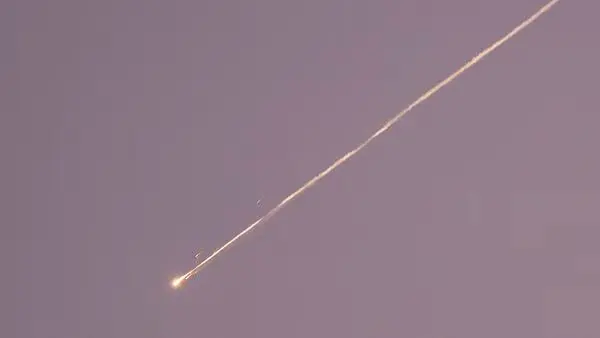
A wave of unidentified drone strikes hit Iraq’s Taji Military Base, Camp Victory Complex, and Baghdad International Airport
Triple Strike: Drones Hit Iraq’s Strategic Nerve Centres
Taji Base – In the early hours of June 24, 2025, Iraq witnessed a coordinated wave of drone strikes targeting three high-value locations: the Taji Military Base, Camp Victory Complex, and Baghdad International Airport. According to Iraqi military officials, the first drone struck a radar installation at Taji Base, located just 20 kilometres north of Baghdad. A second drone reportedly fell near a generator within the same facility.
Table of Contents
Simultaneously, explosions were reported near the Radwaniya district, west of Baghdad International Airport, where US troops are stationed as part of the anti-jihadist coalition. Camp Victory, a former US military hub adjacent to the airport, also came under threat, though the extent of damage remains unclear.
Lieutenant General Walid al-Tamimi, commander of Baghdad operations, confirmed that no casualties occurred in any of the incidents. However, the strikes caused material damage and disrupted radar and power systems, prompting heightened security alerts across the capital.
Who’s Behind the Drones? Mystery Fuels Regional Anxiety
No group has claimed responsibility for the attacks, leaving Iraqi and international observers scrambling for answers. The strikes came just hours after Iran launched missiles at a US base in Qatar in retaliation for American airstrikes on Iranian nuclear facilities. While Iraqi officials have stated that Iran has not directly targeted US bases inside Iraq, the timing of the drone incidents has raised eyebrows.
Historically, Taji Base and Camp Victory have been frequent targets of Iran-backed militias, especially before the withdrawal of US-led coalition forces in 2020. The use of drones, often favored by non-state actors for their stealth and deniability—suggests a possible continuation of proxy tactics amid the broader Iran-Israel-US conflict.
Security analysts warn that the ambiguity surrounding the perpetrators could be intentional. “This is classic grey-zone warfare,” said a regional defense expert. “The goal is to destabilize without triggering full-scale retaliation.”
Fallout and Forward Path: Iraq Caught in the Crossfire
The drone strikes have once again spotlighted Iraq’s precarious position in the Middle East power struggle. As a host to both US military personnel and Iranian-backed militias, Iraq finds itself walking a diplomatic tightrope. The government has called for calm and launched an investigation, but the lack of airspace control and early-warning capabilities remains a glaring vulnerability.
Civil aviation authorities briefly suspended operations at Baghdad International Airport, and commercial airlines are now rerouting flights to avoid Iraqi airspace. Meanwhile, the Iraqi Parliament has demanded a closed-door briefing from the Ministry of Defense and Intelligence Services.
International reactions have been swift. The United Nations has urged restraint, while NATO and the U.S. Department of Defense have reiterated their commitment to protecting coalition personnel in Iraq. Iran has remained silent on the drone incidents, neither confirming nor denying involvement.
As tensions simmer, the strikes serve as a stark reminder: in today’s Middle East, even the skies are battlegrounds, and the next flashpoint may come without warning.
Stay updated with the latest news on Rapido Updates. Keep yourself updated with The World, India News, Entertainment, Market, Automobile, Gadgets, Sports, and many more